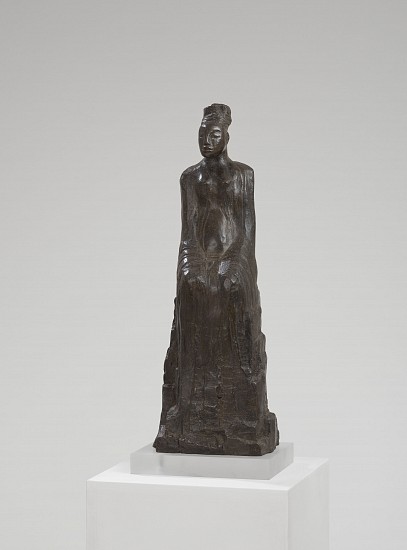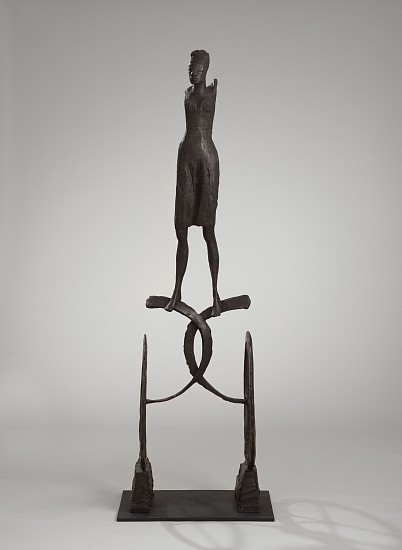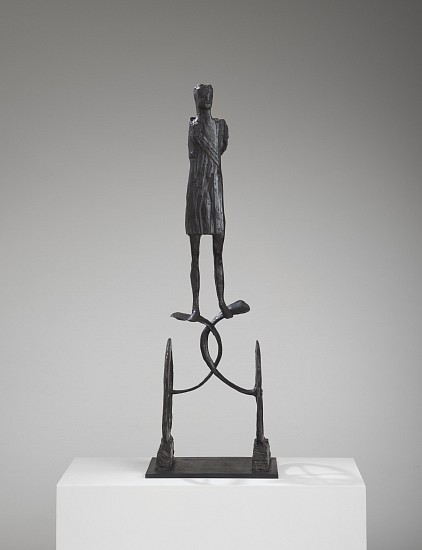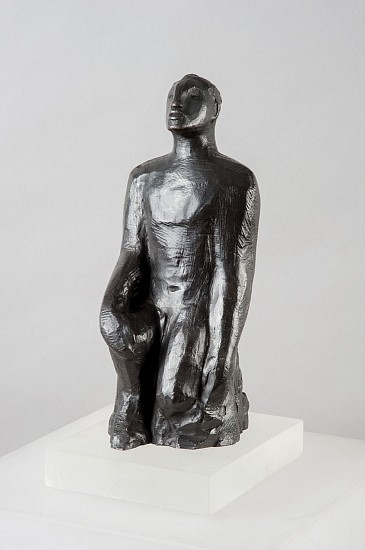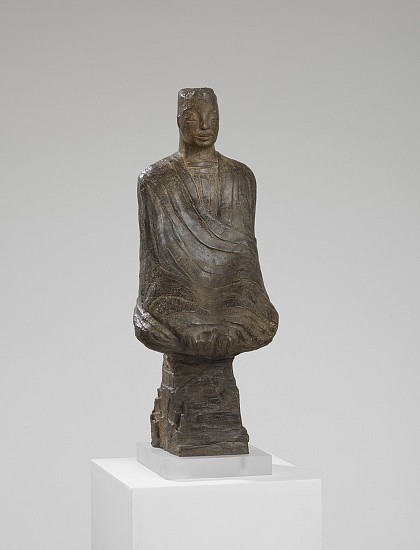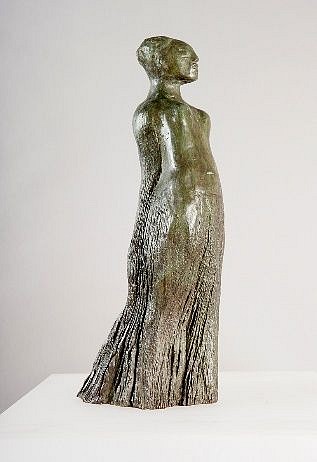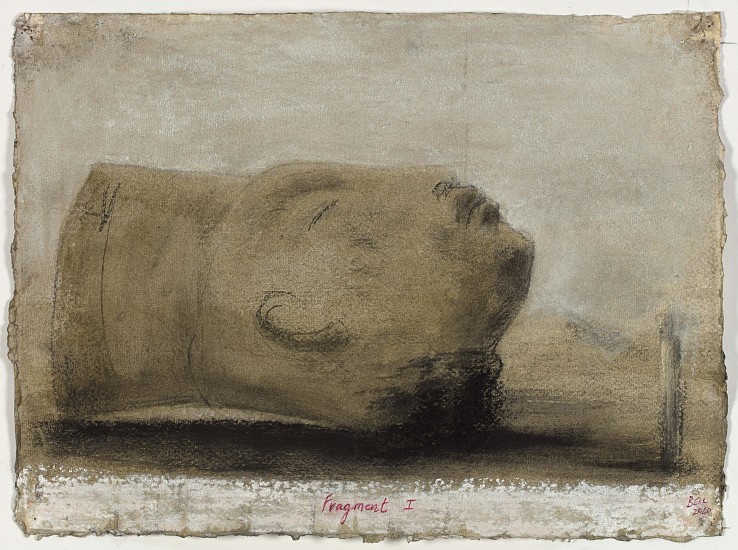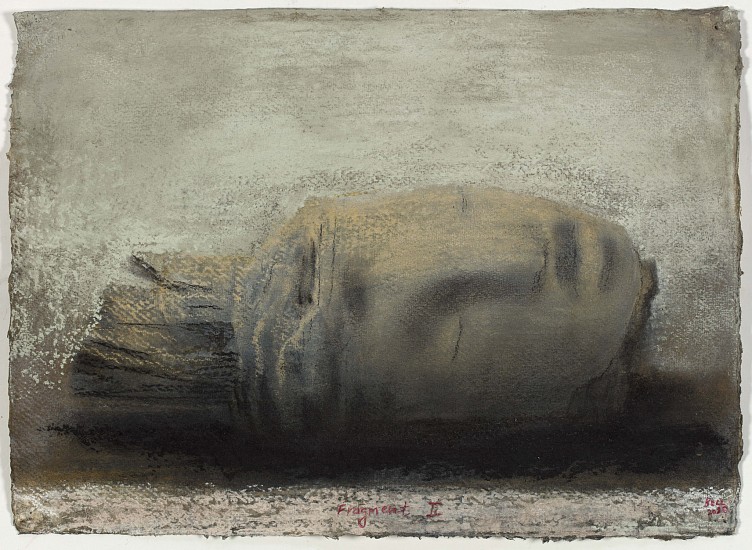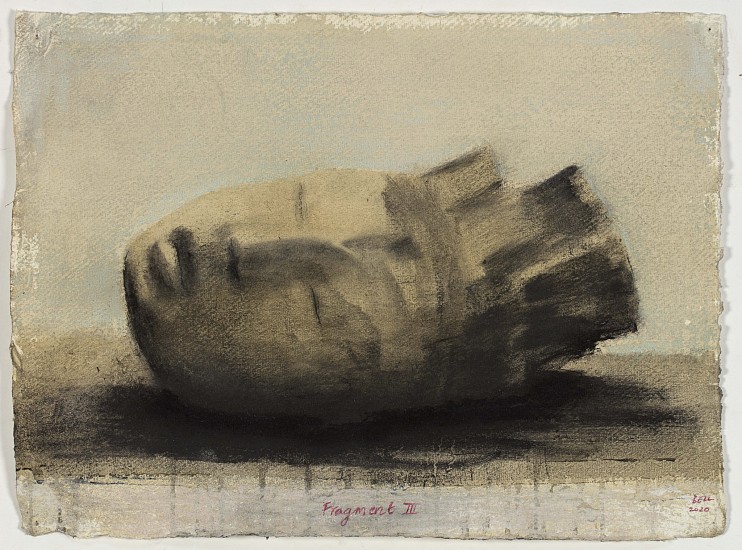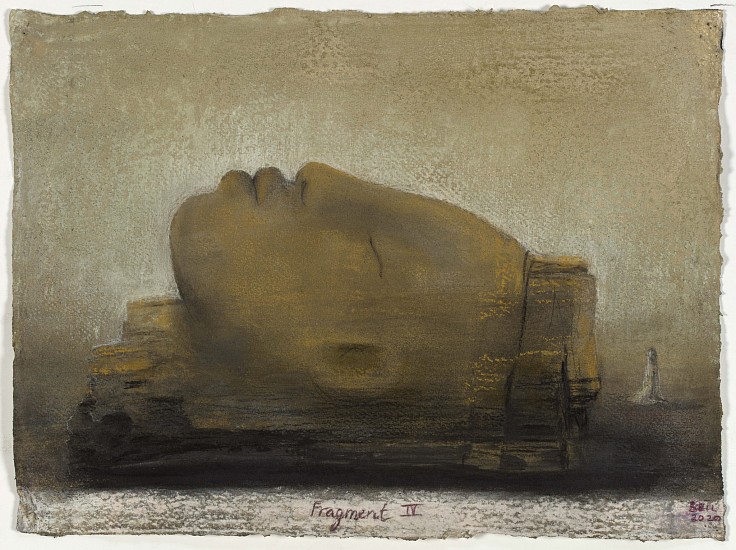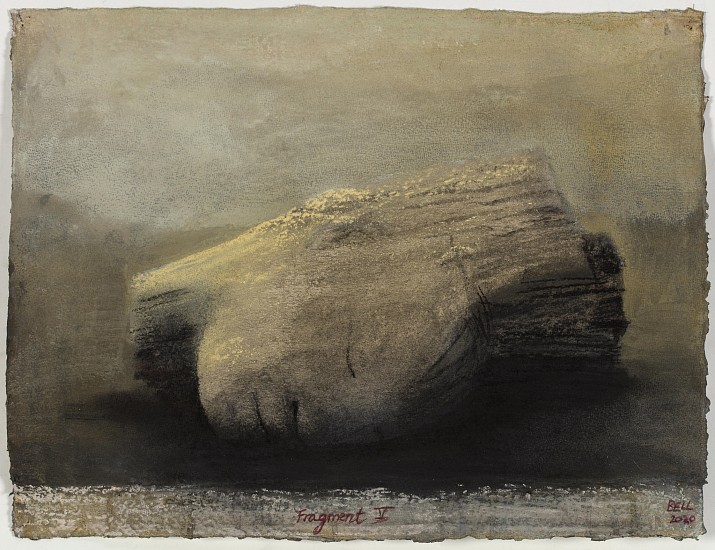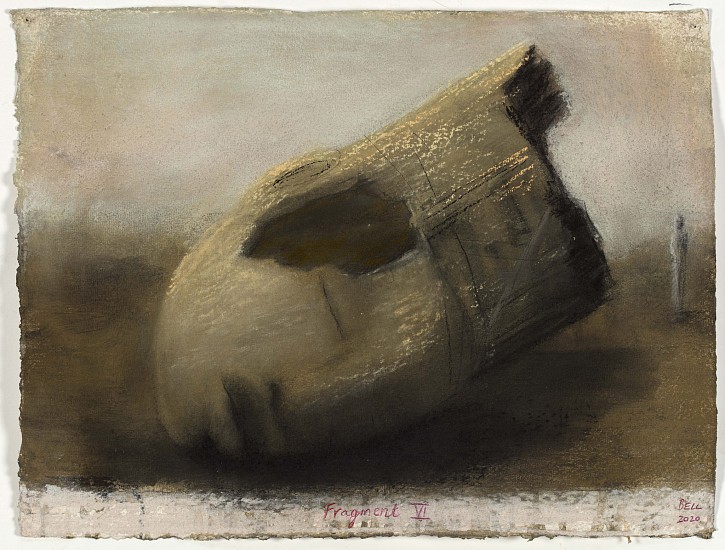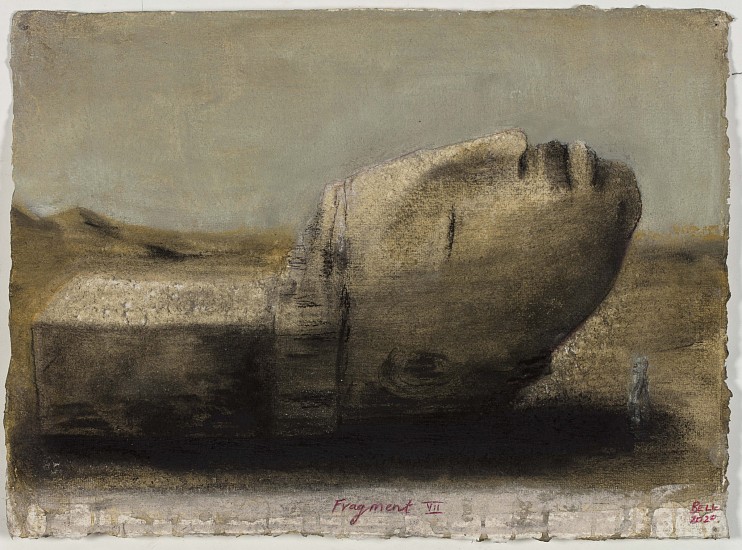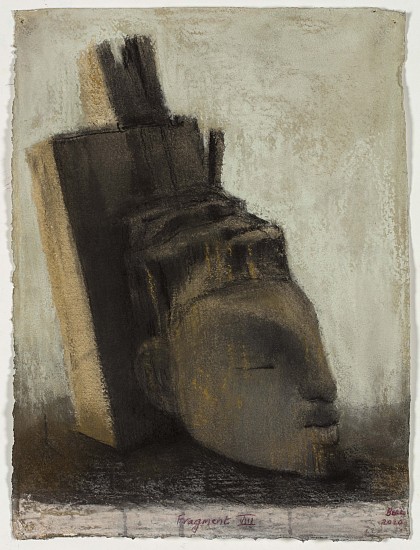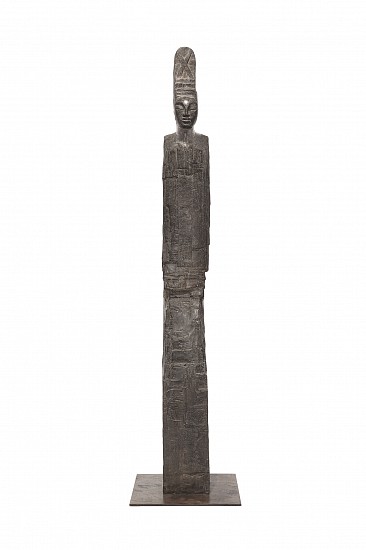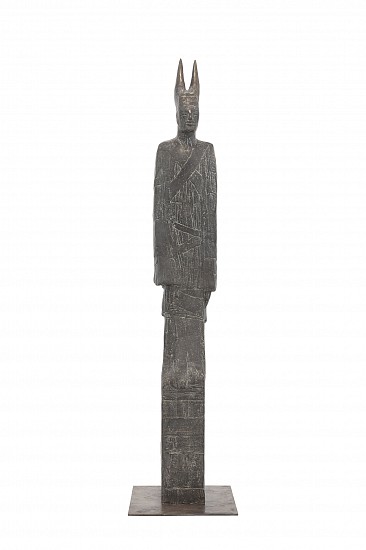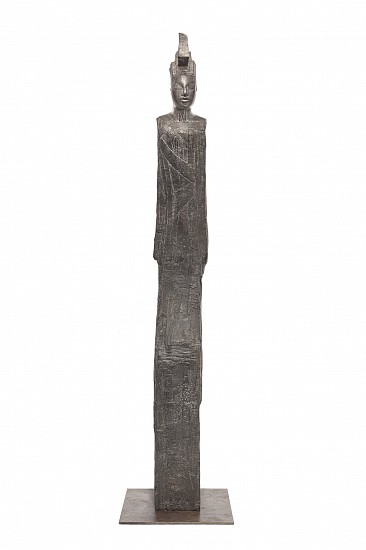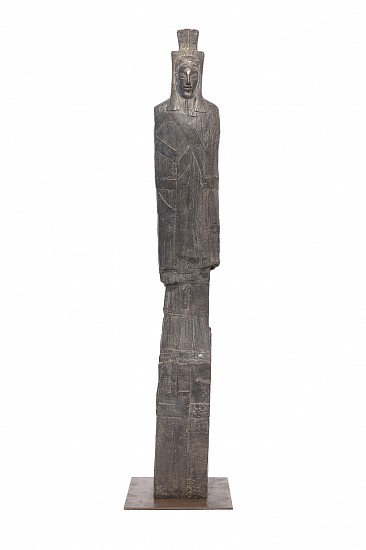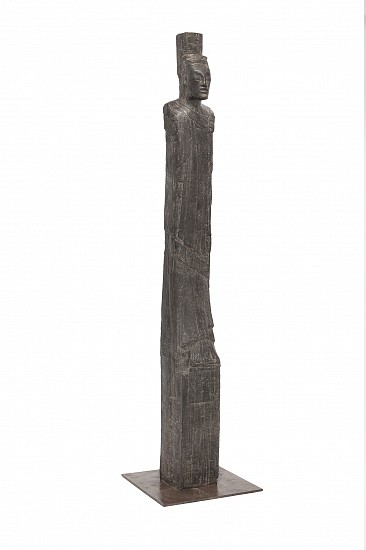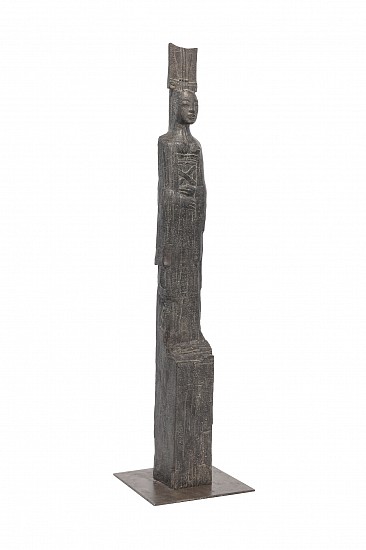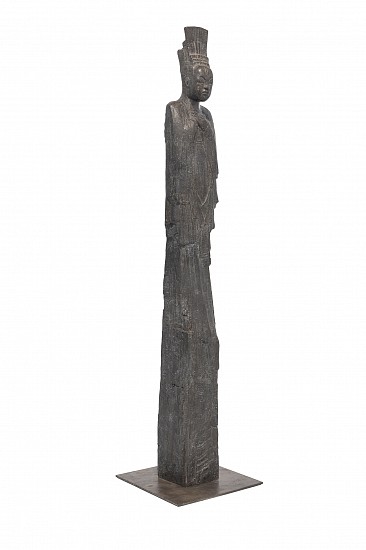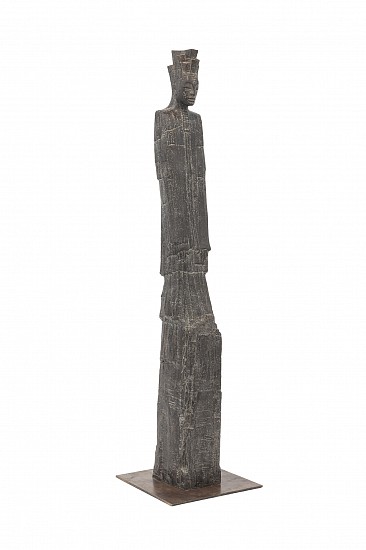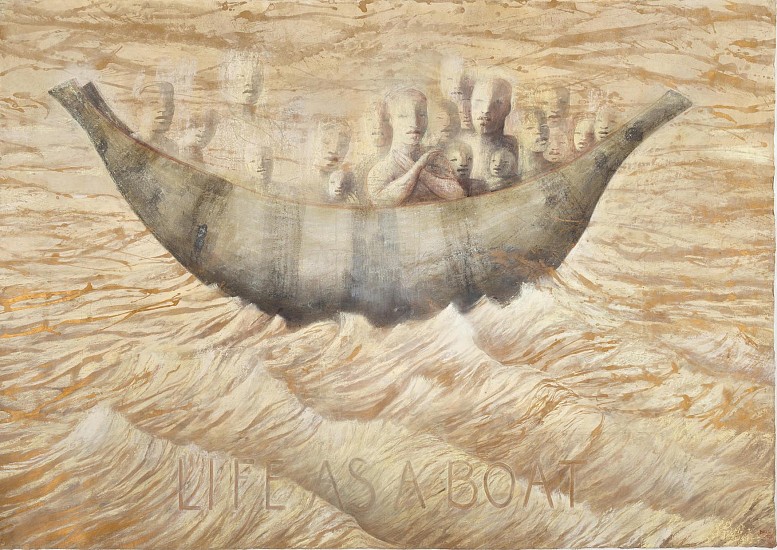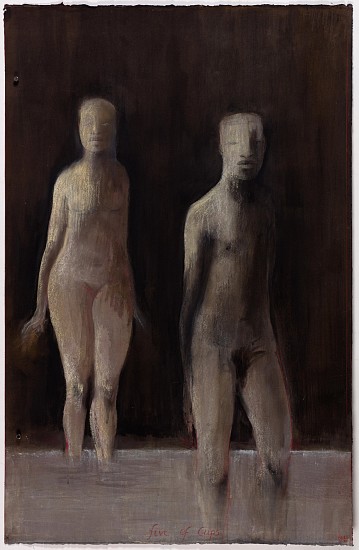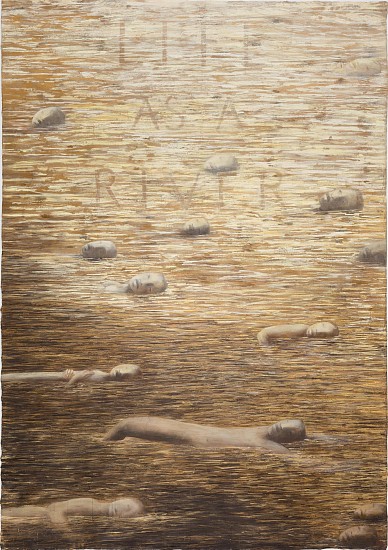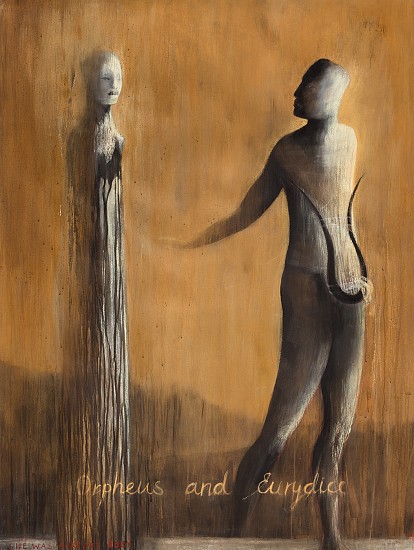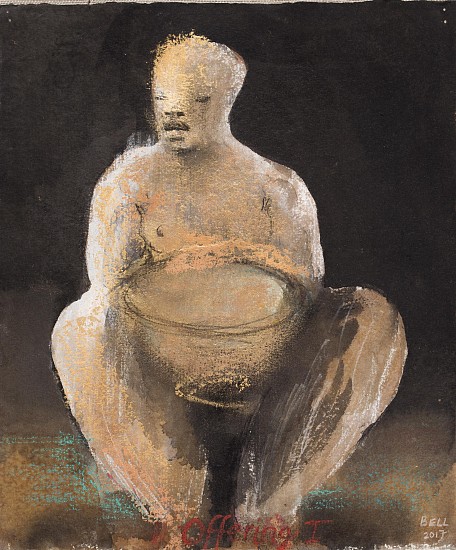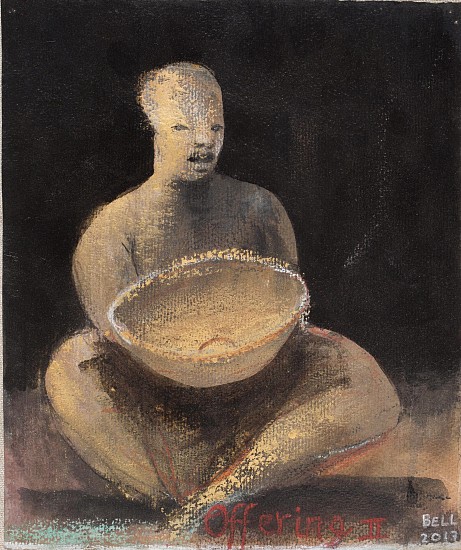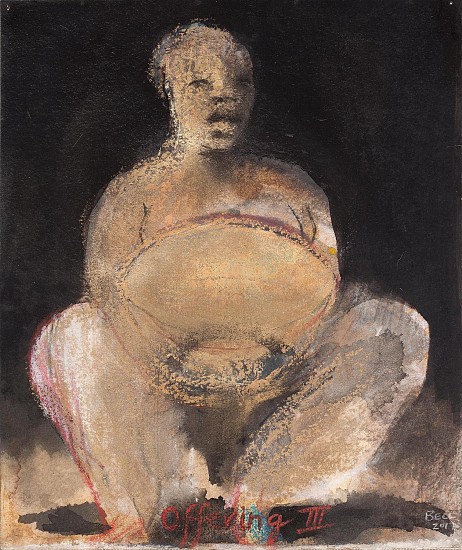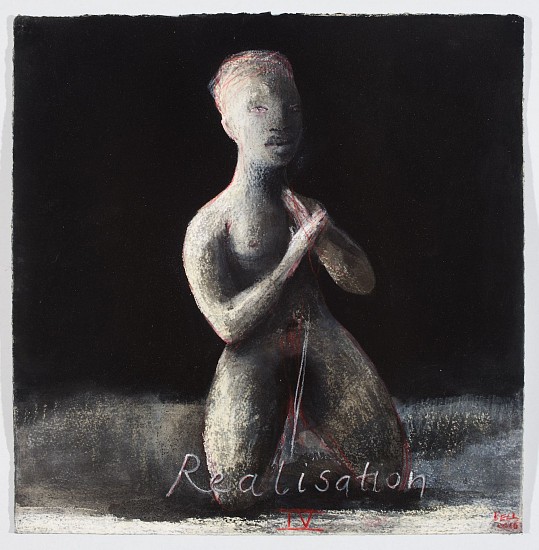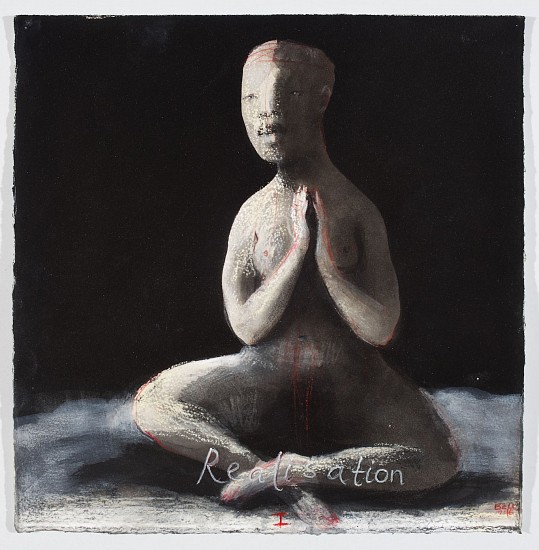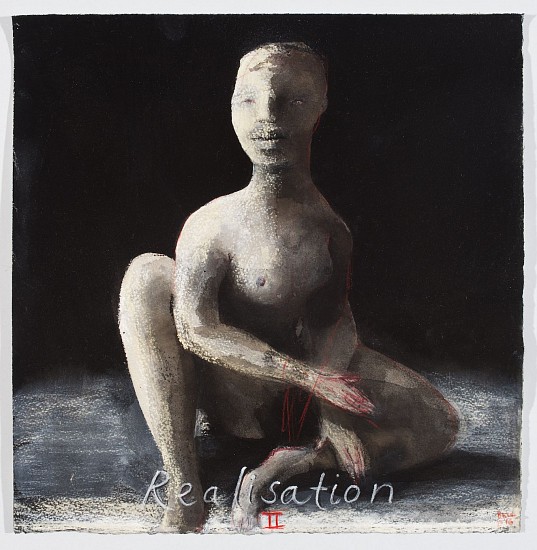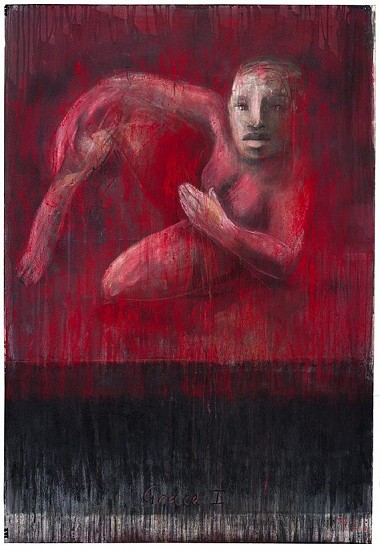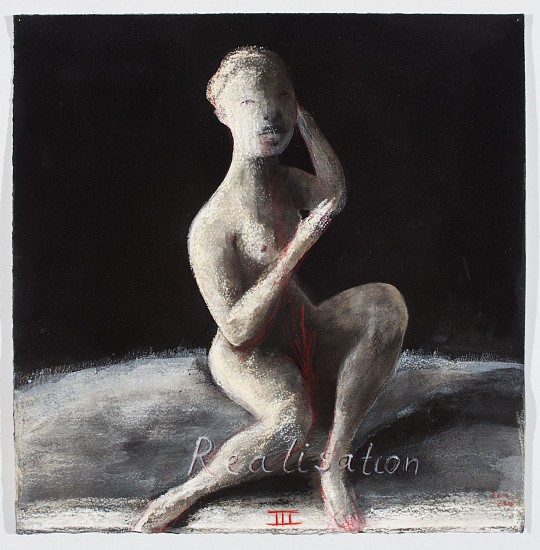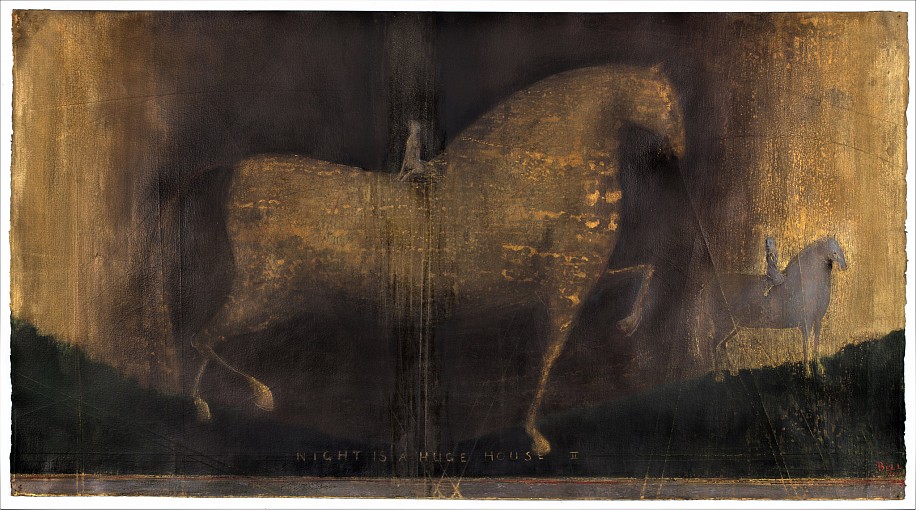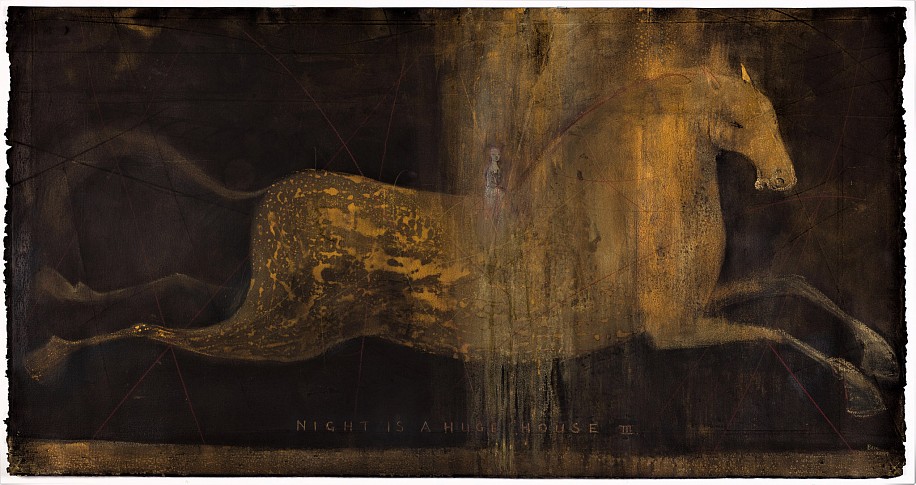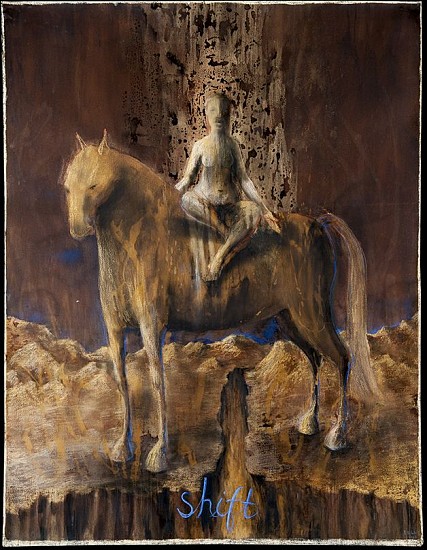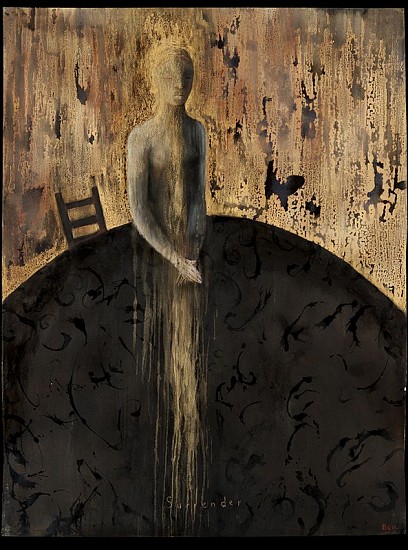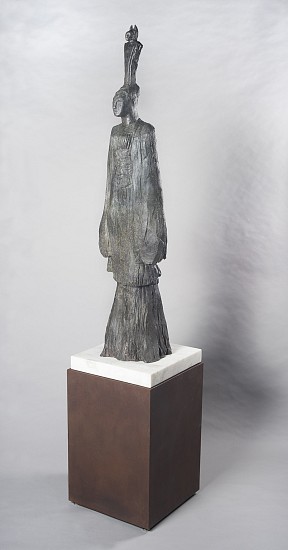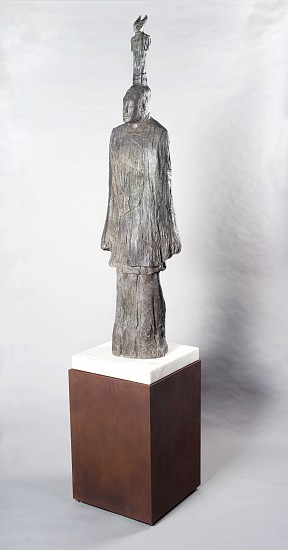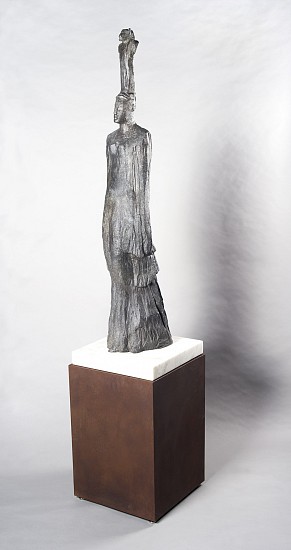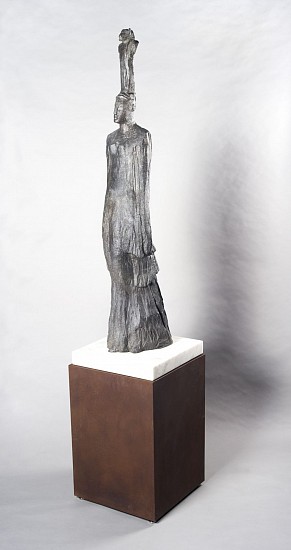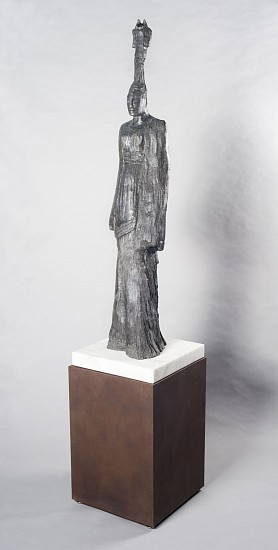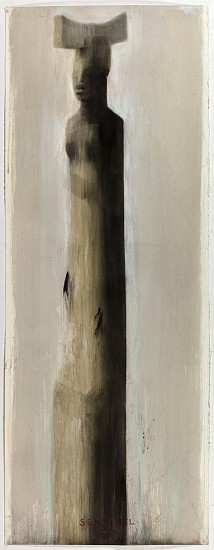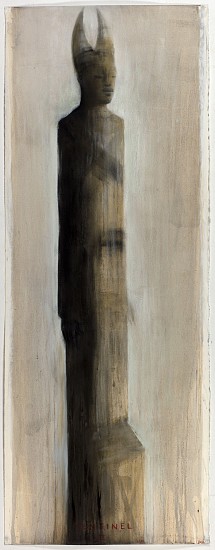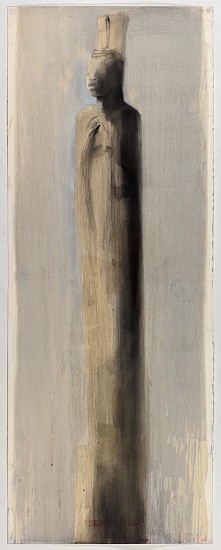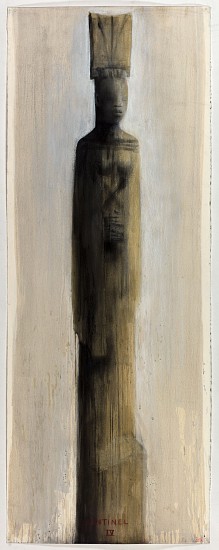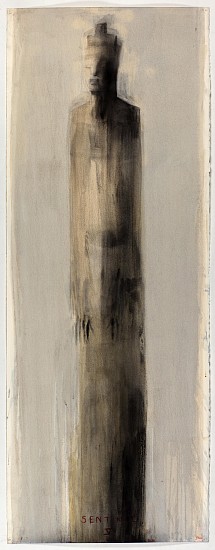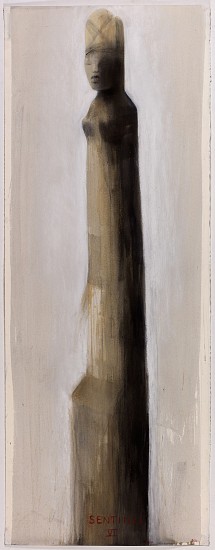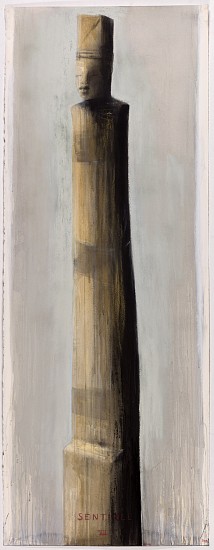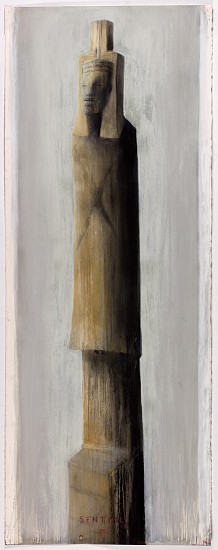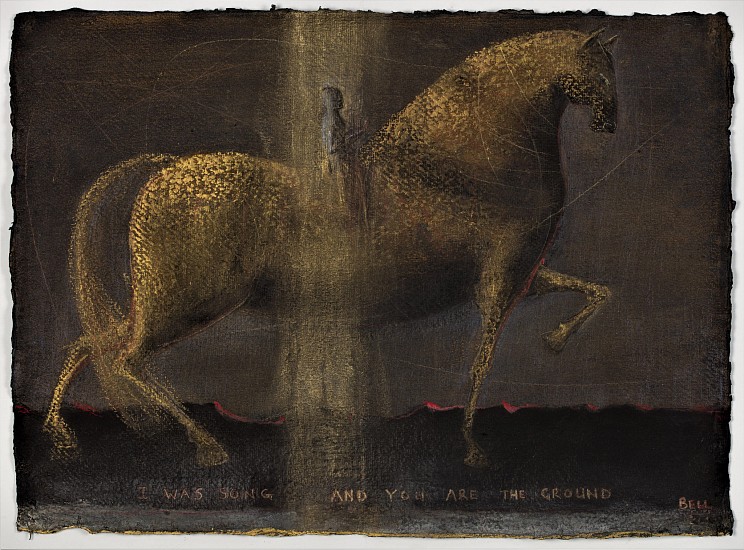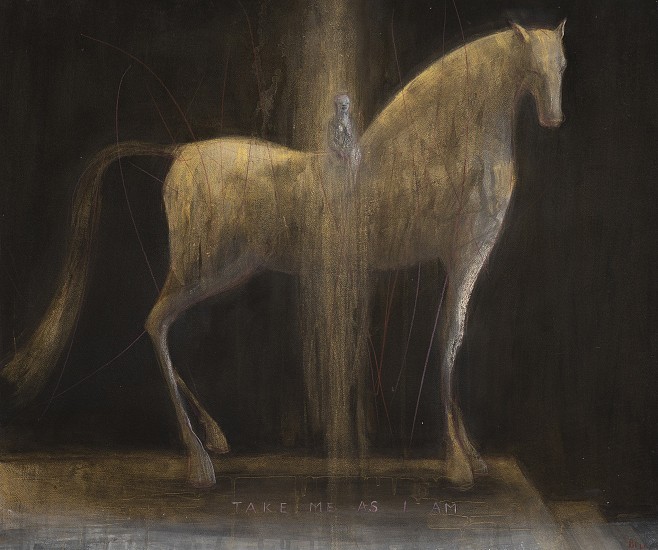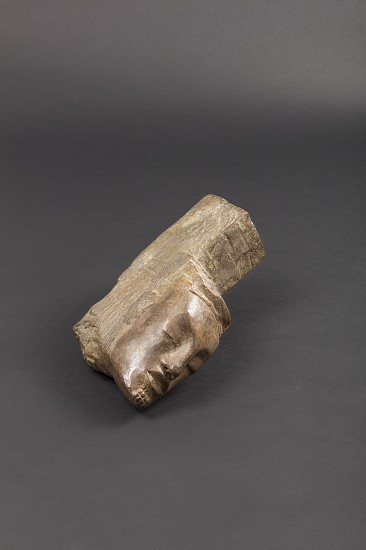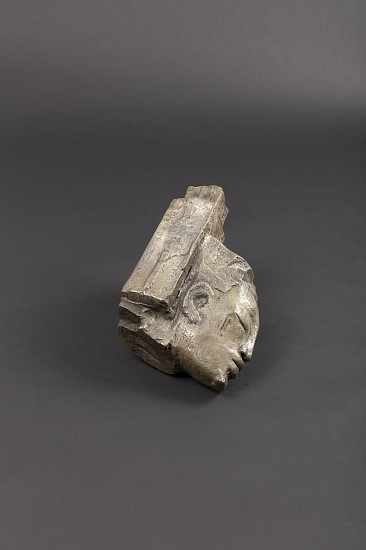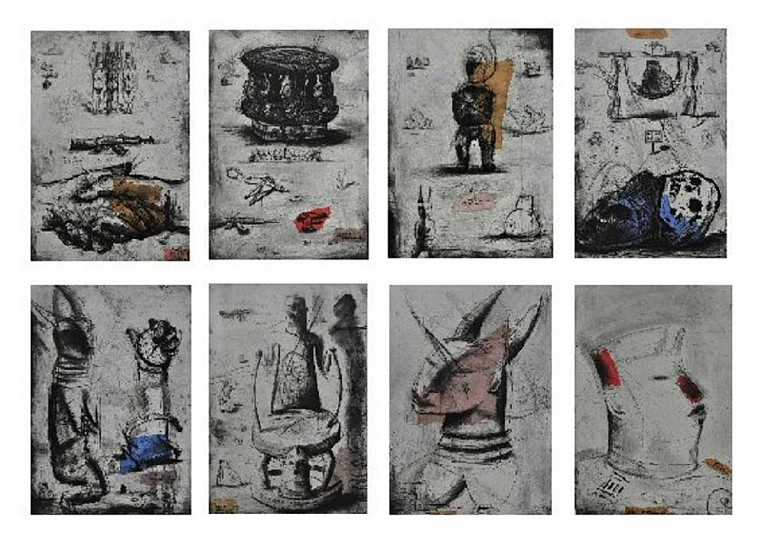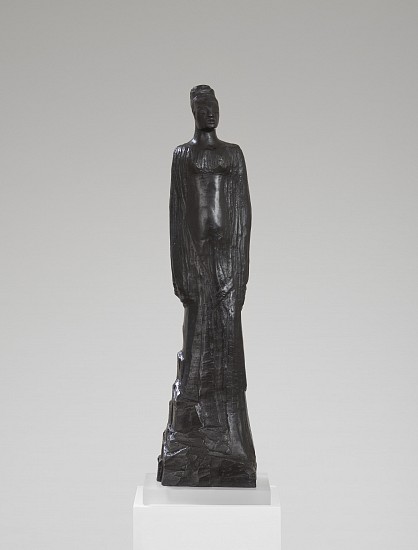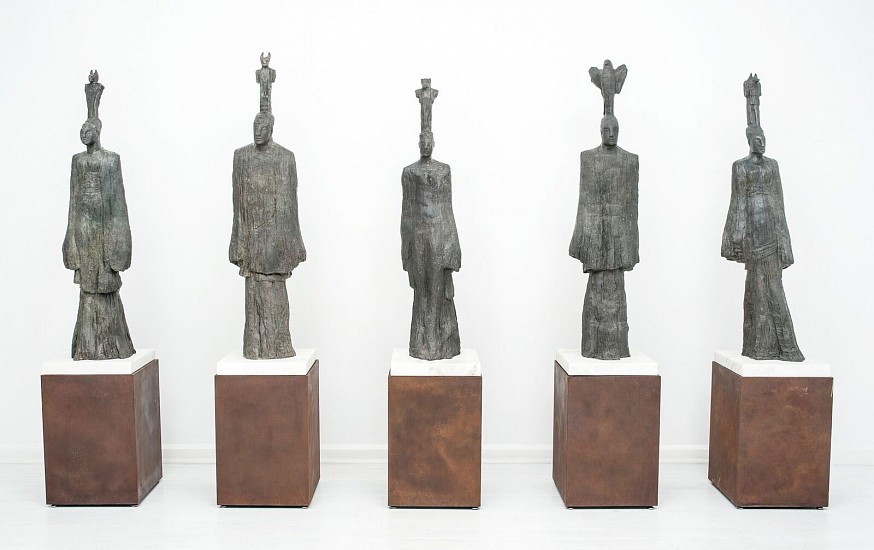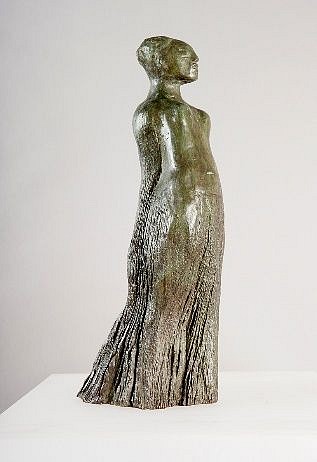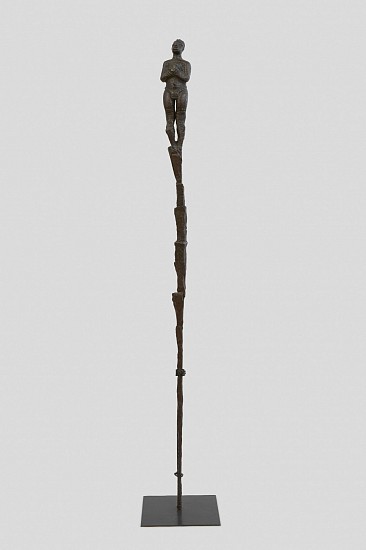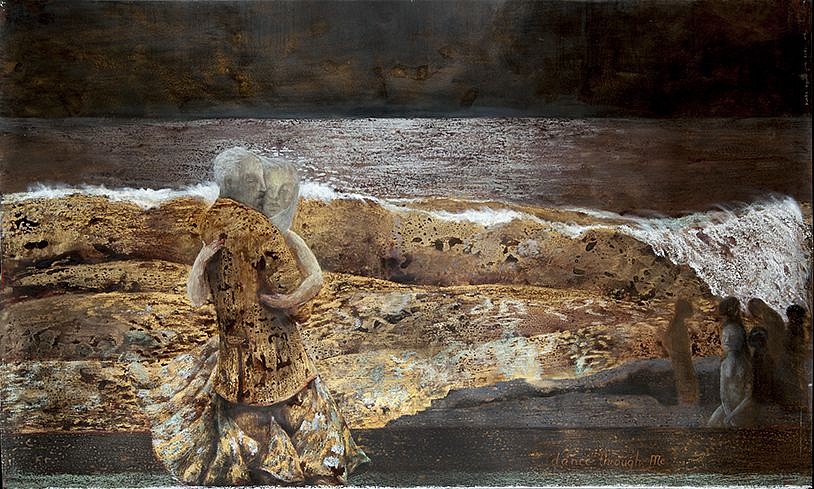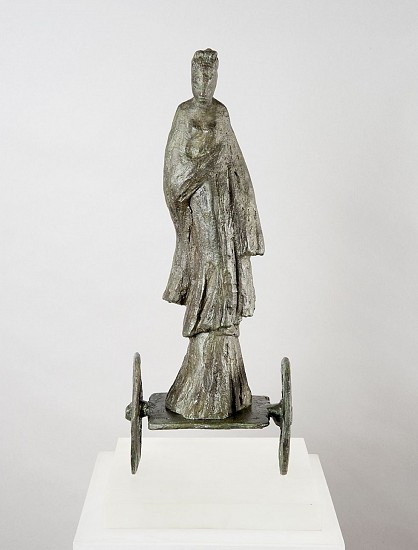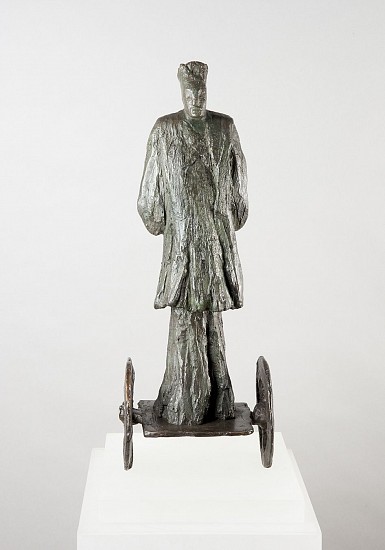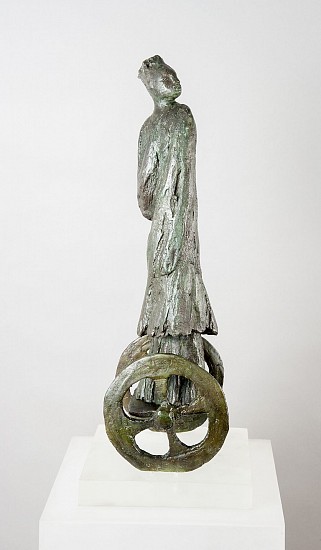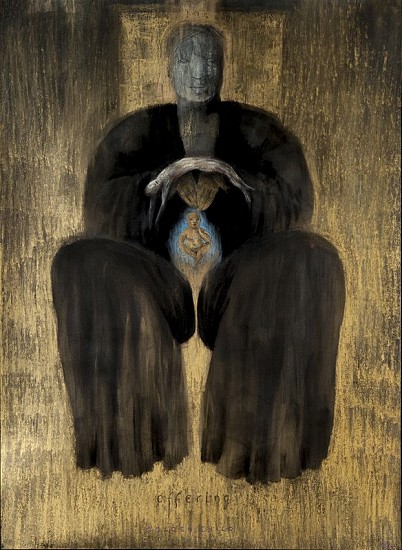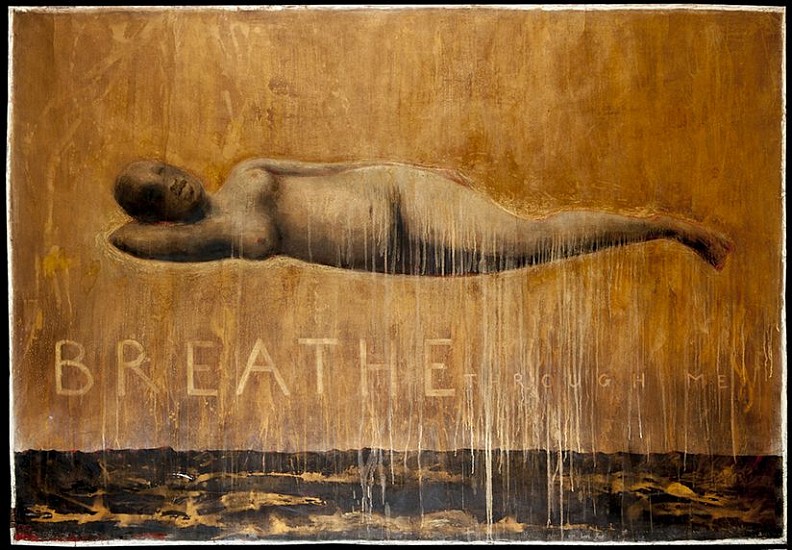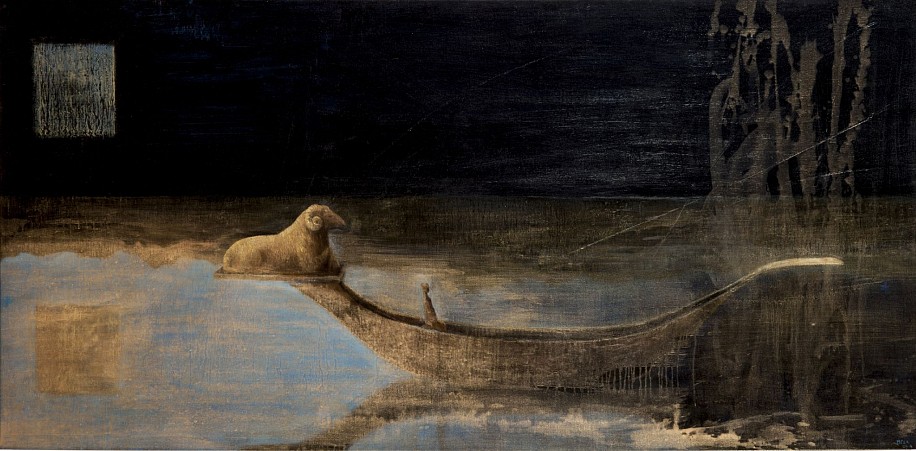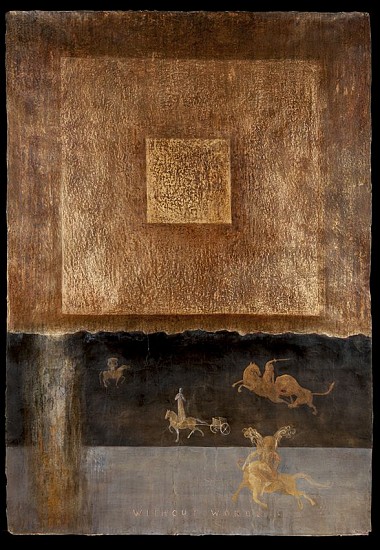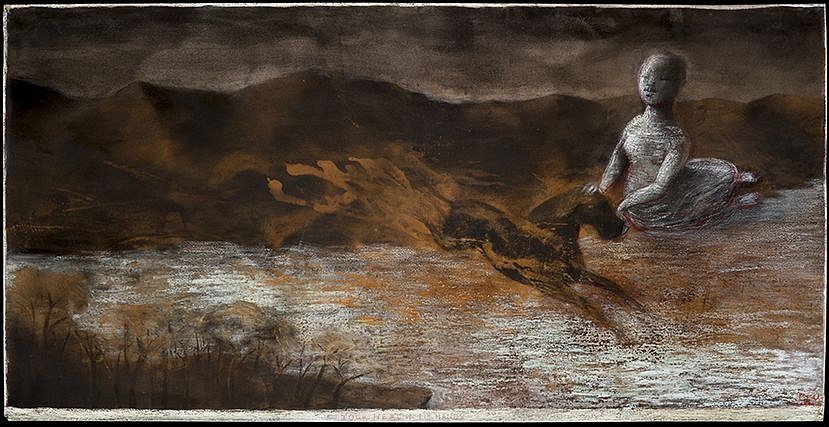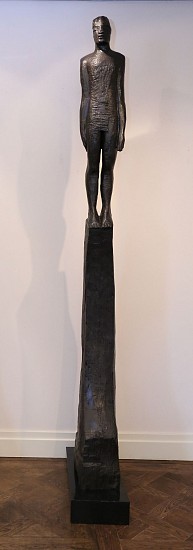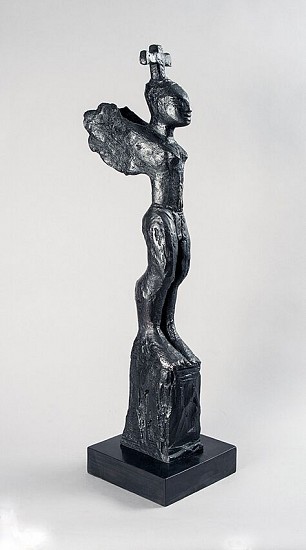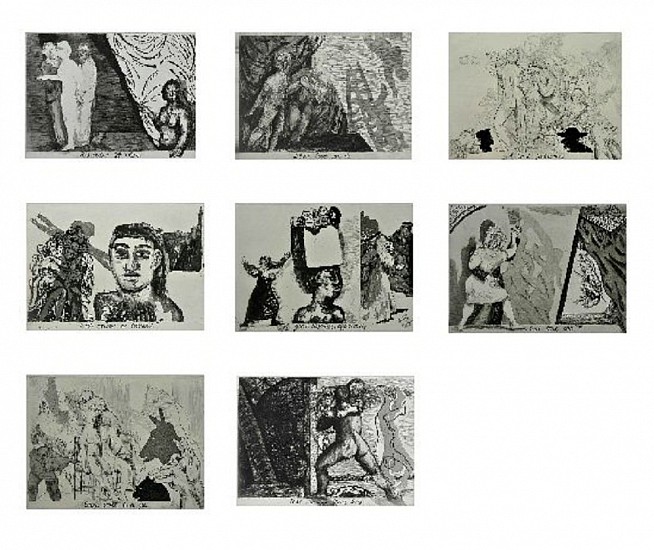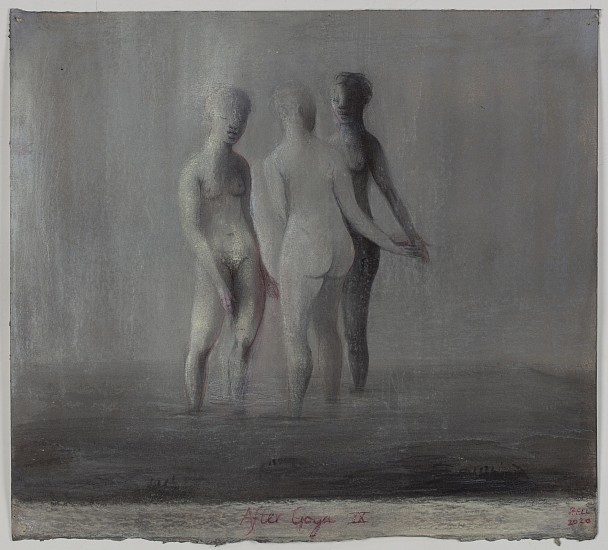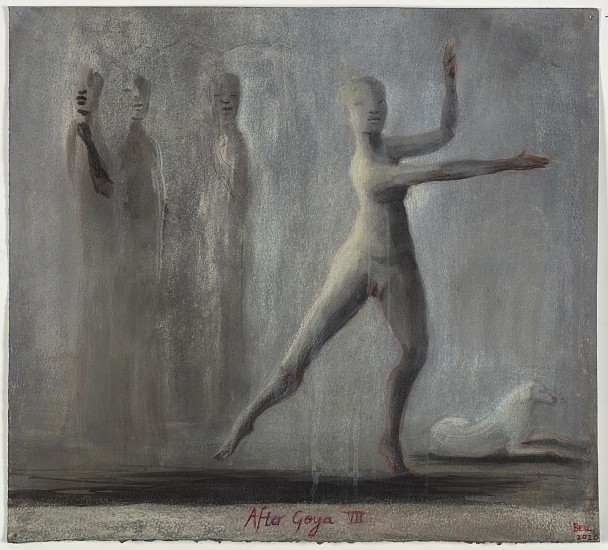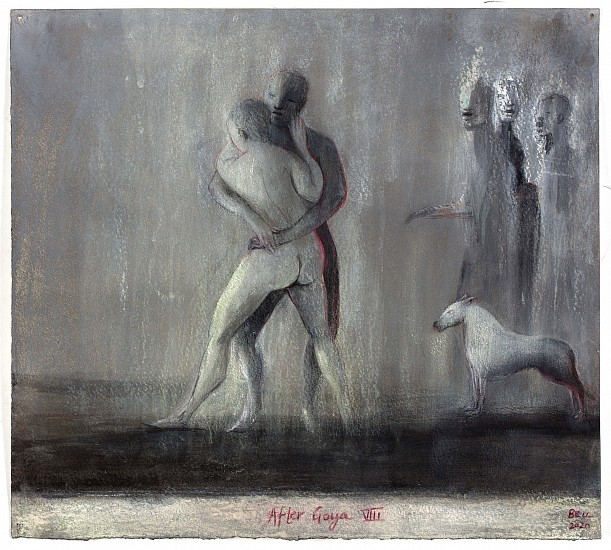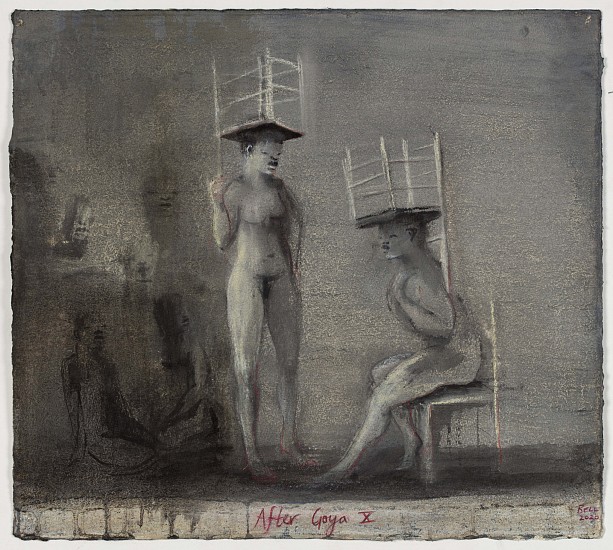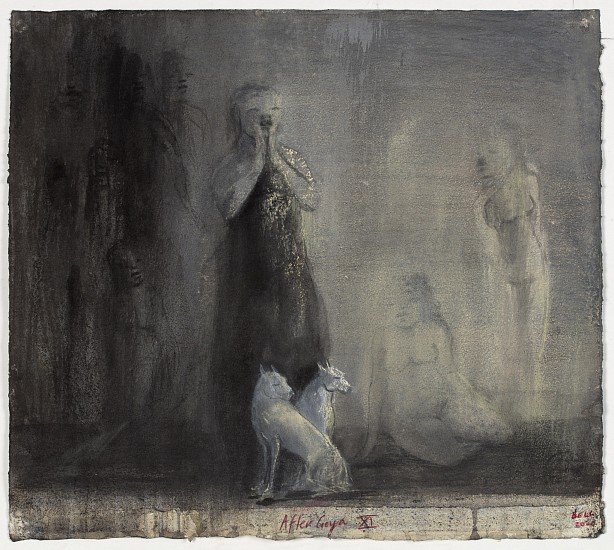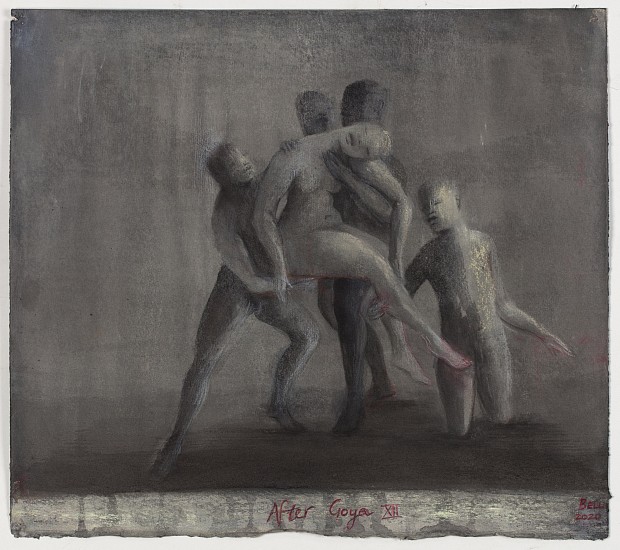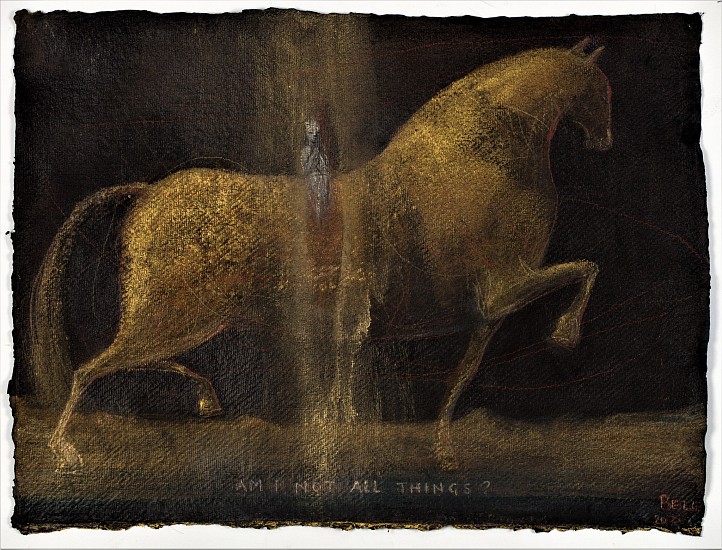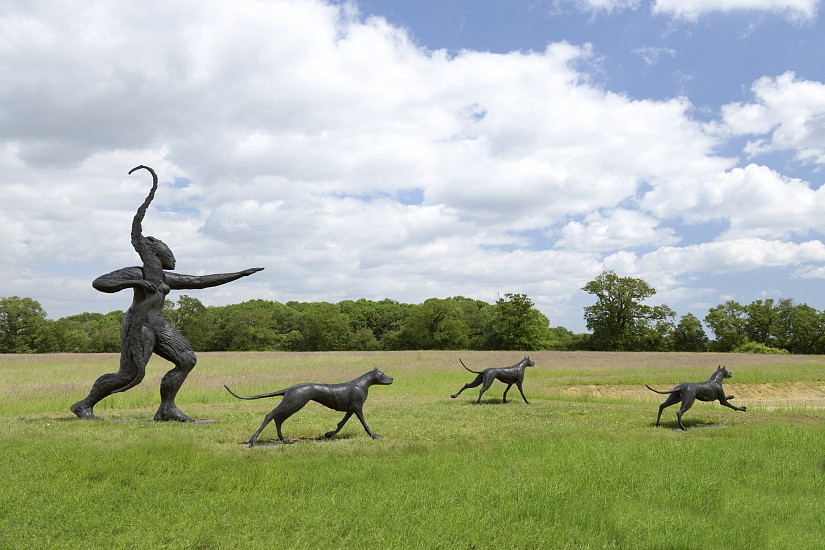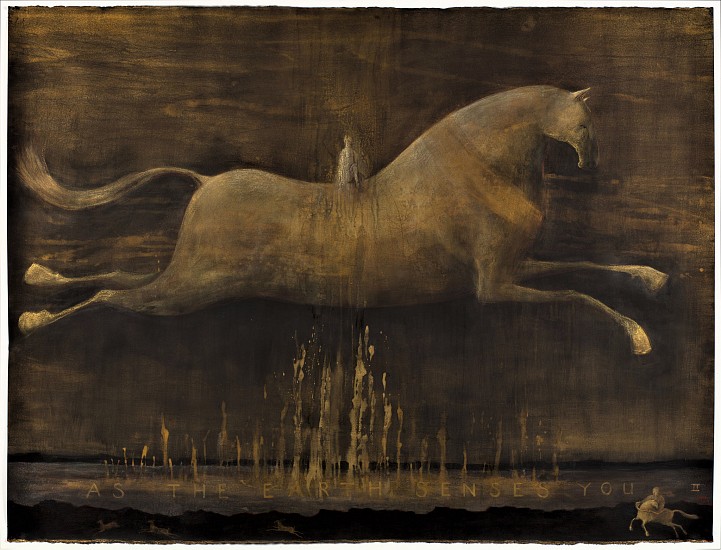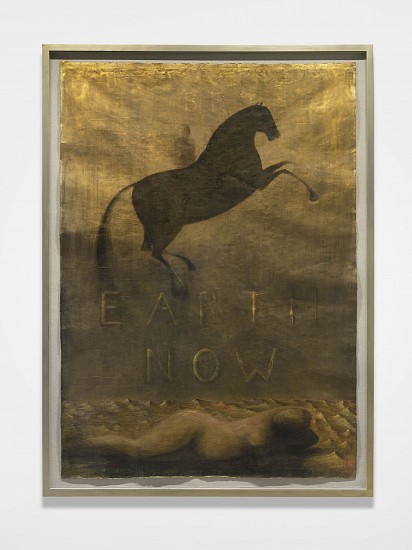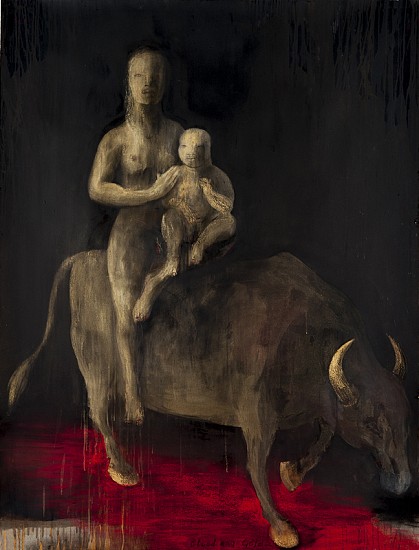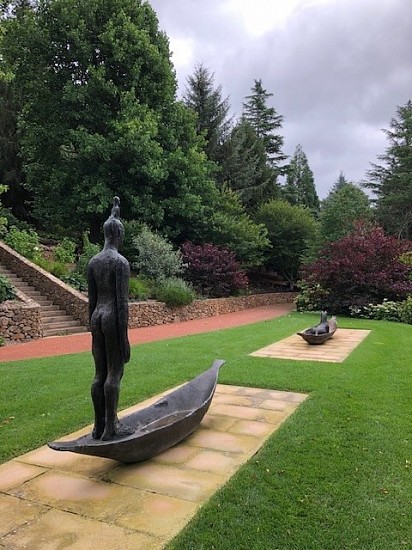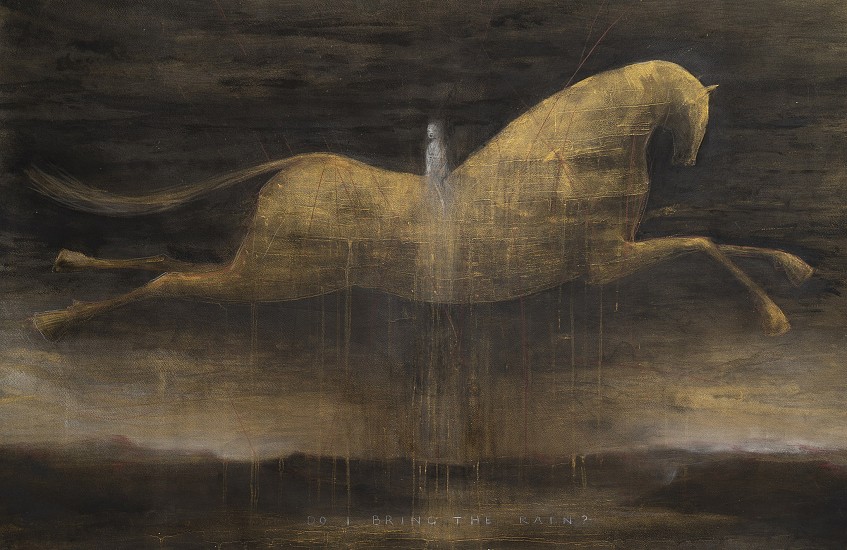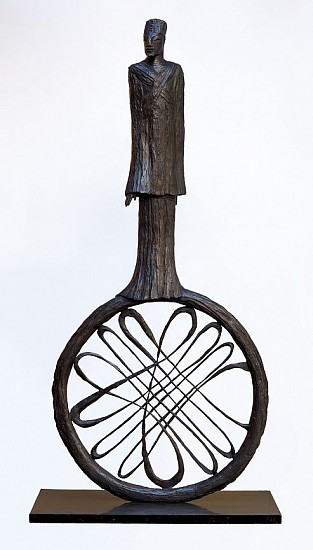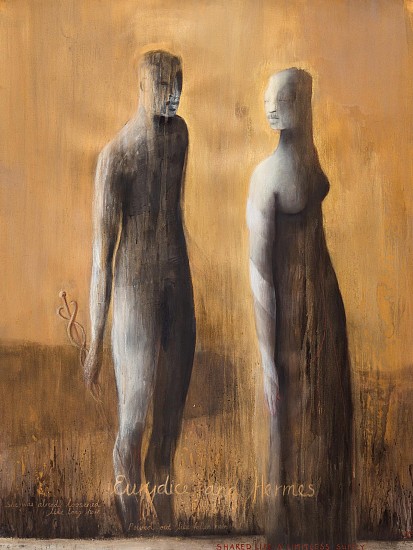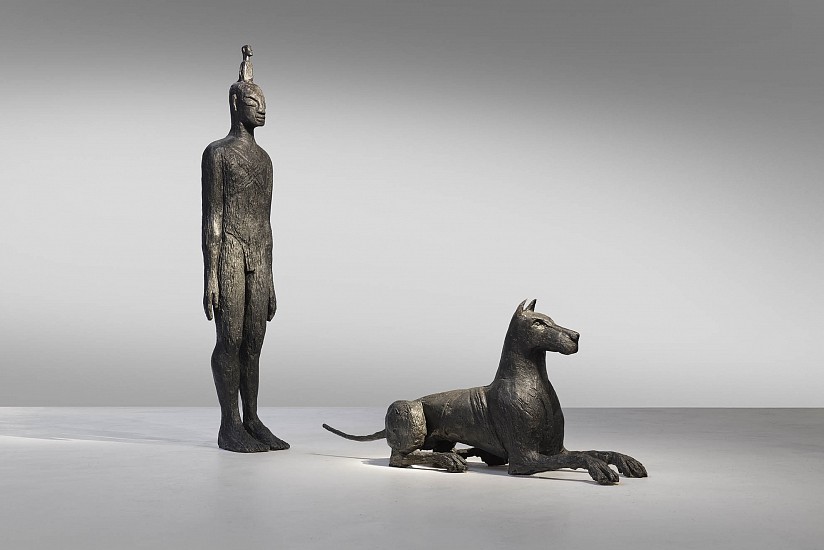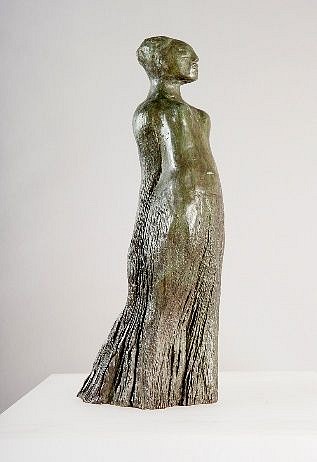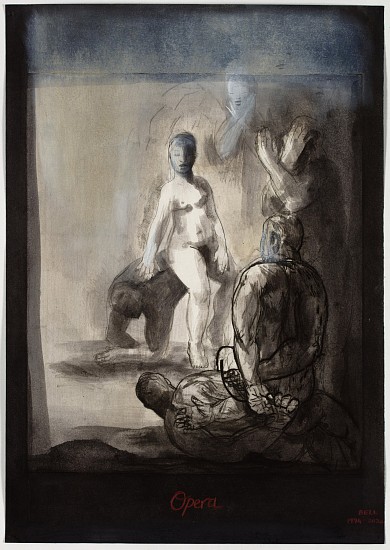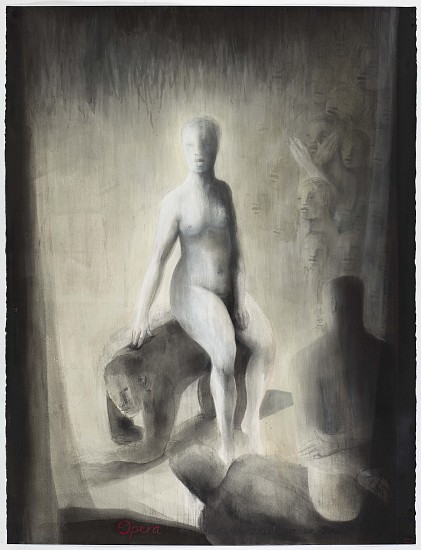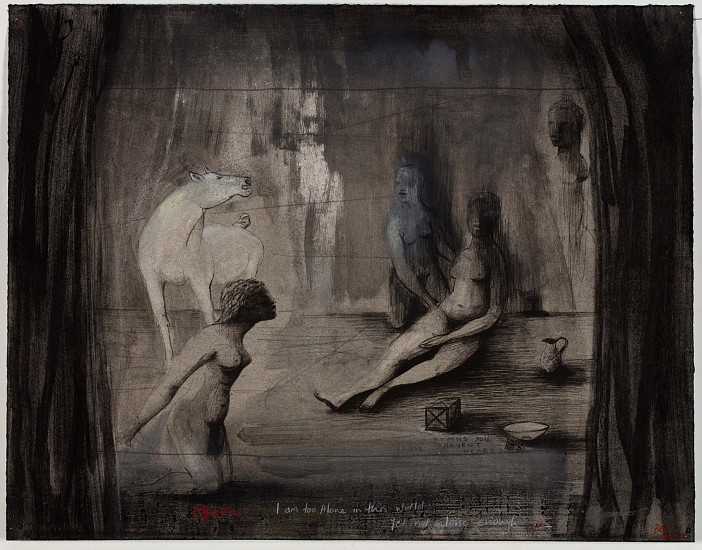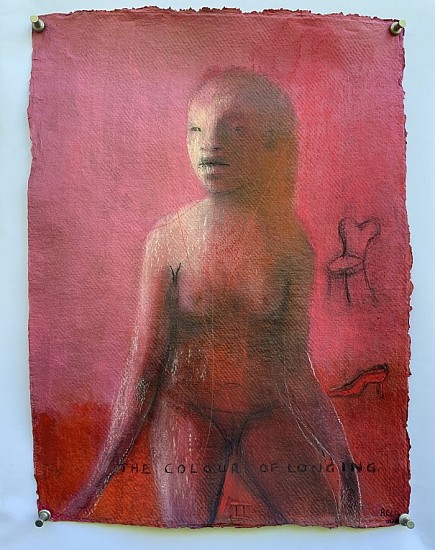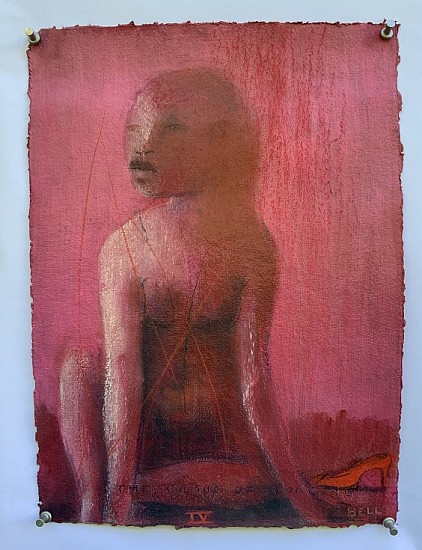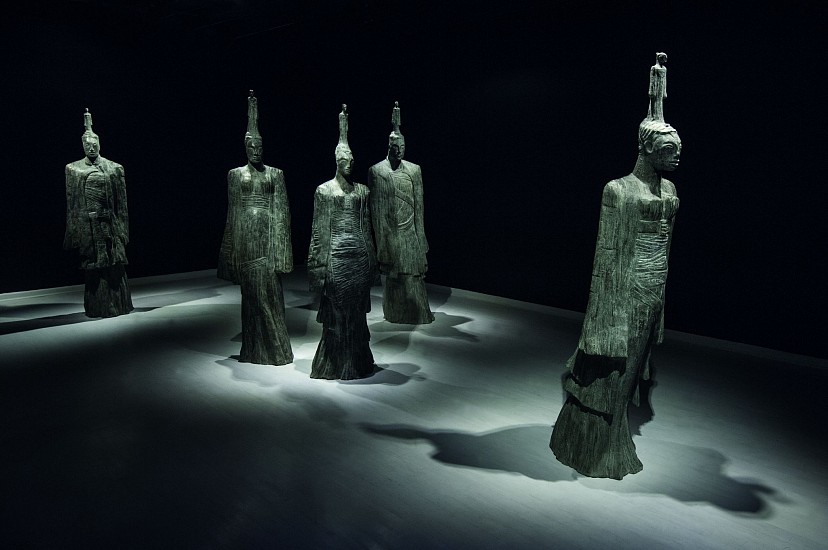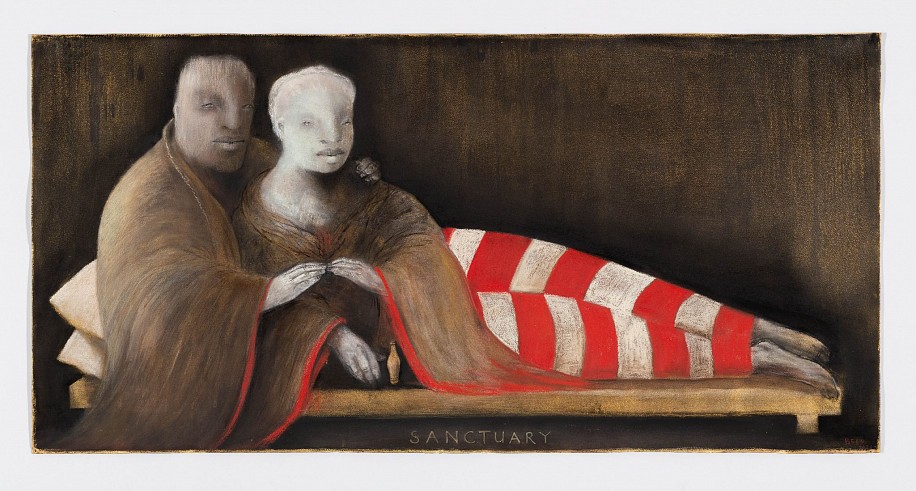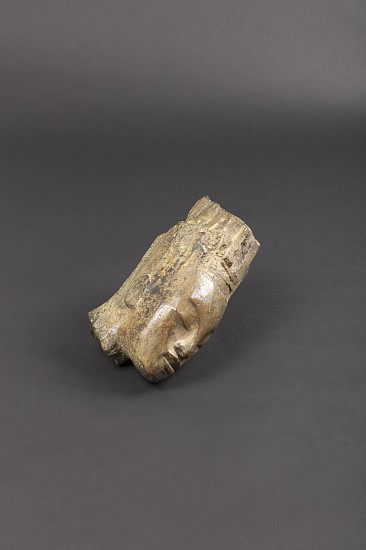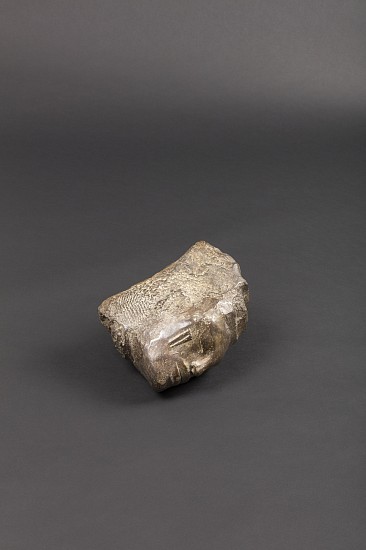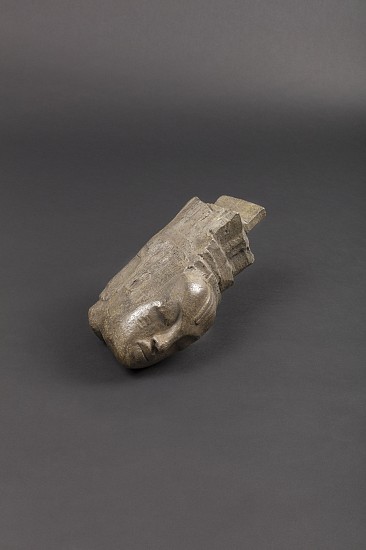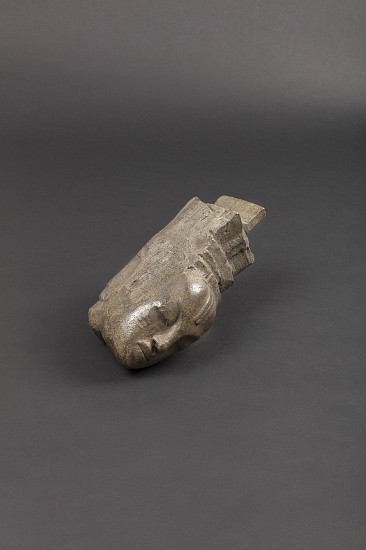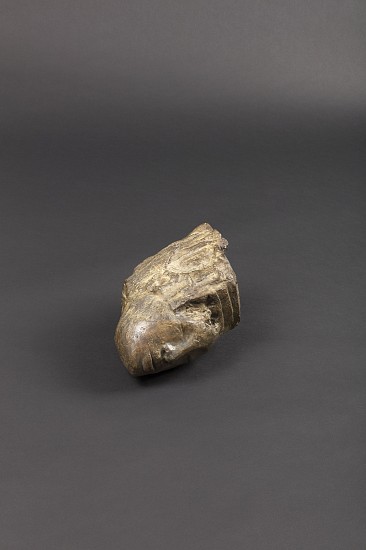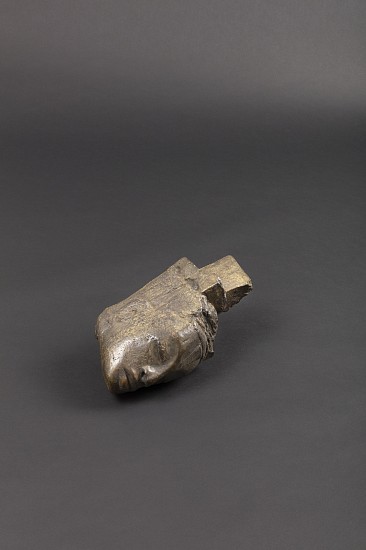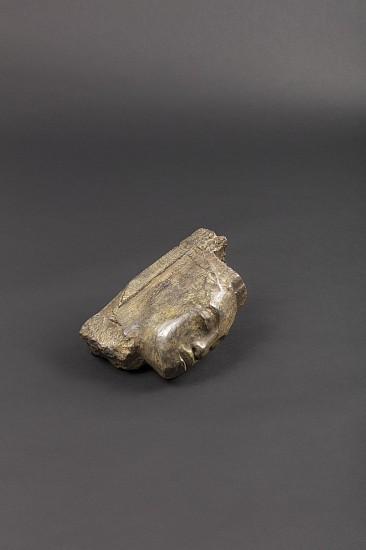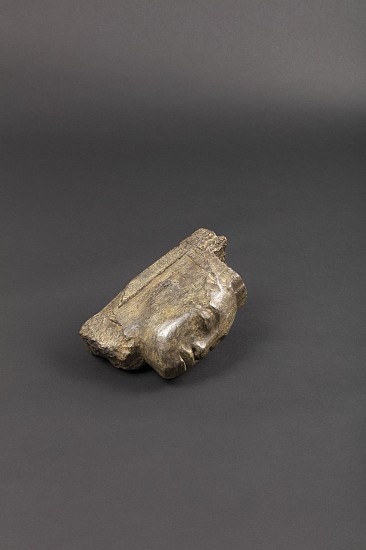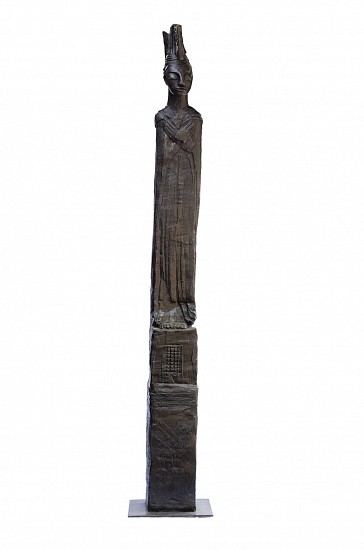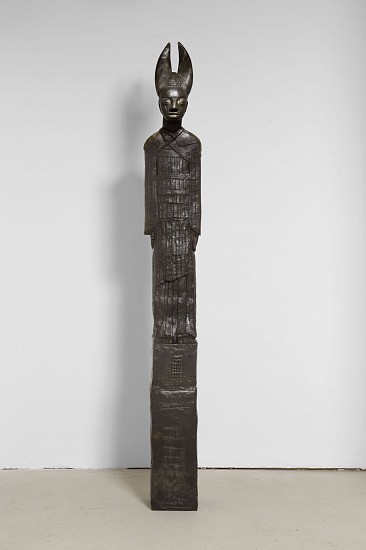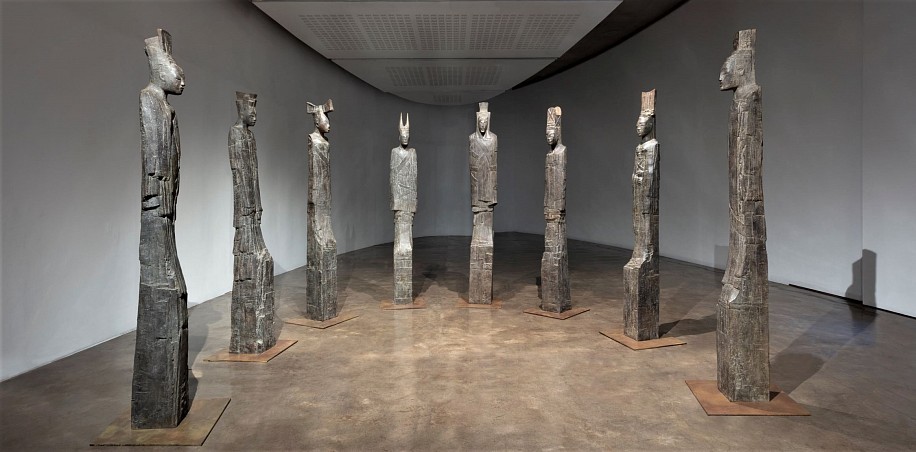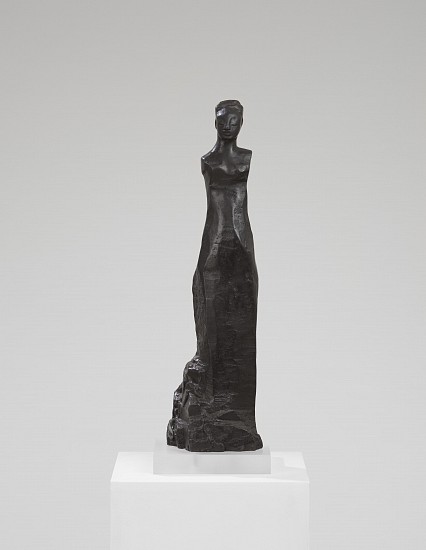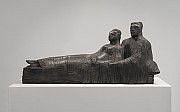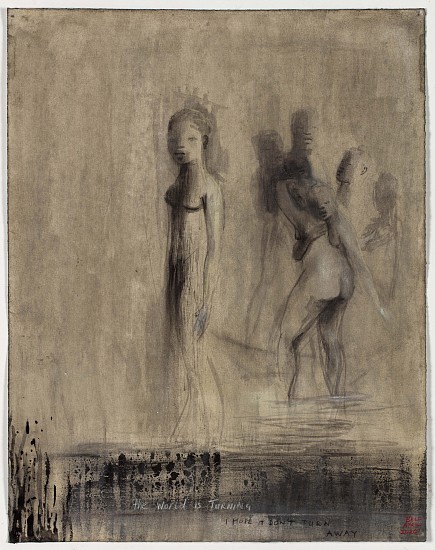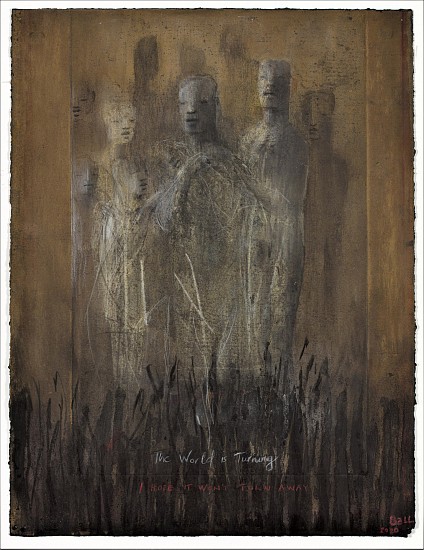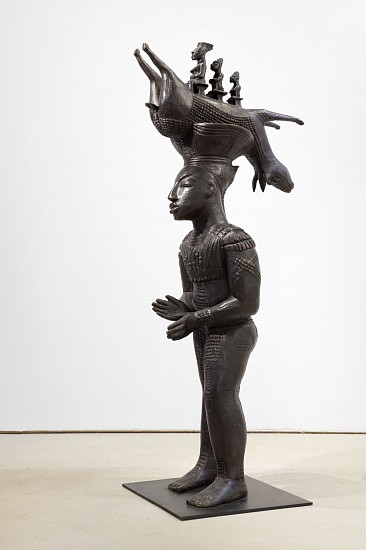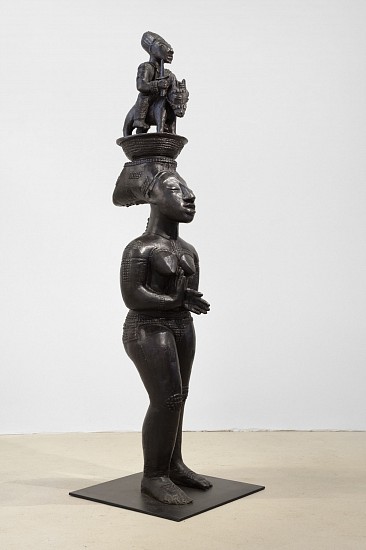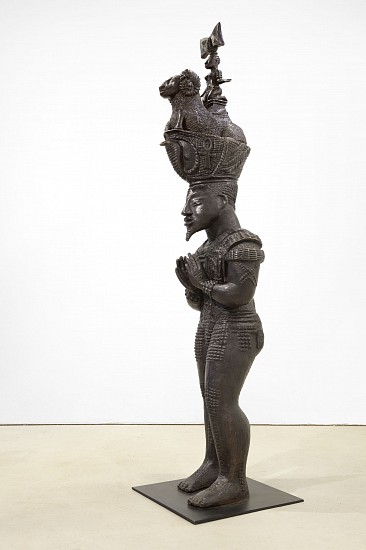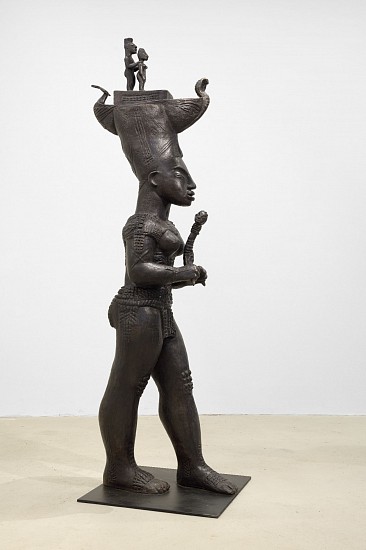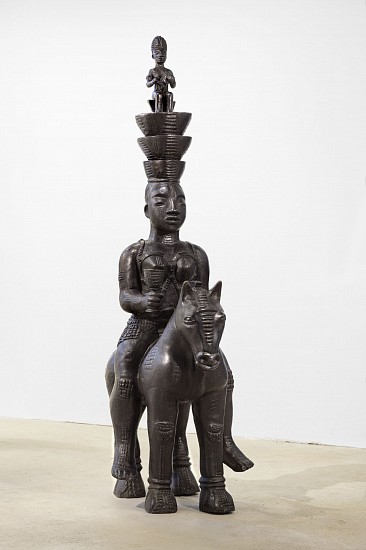DEBORAH BELL
Deborah Bell is one of South Africa’s most celebrated contemporary artists.
Bell has called these silent and seemingly ancient figures Invocation: The Ancient Ones. Made of cast bronze on marble bases resting on steel plinths, they evolved from a previous set of five monumental figures that Bell made in 2015 entitled Return of the Gods.
Draped in robes, the figures exude serenity as they drift, eyes closed, towards the horizon. Bell has described the smaller totemic figures resting on their heads as manifestations of one’s higher self, spirit, or soul.
Over the years the artist’s work has become increasingly concerned with surrender – to the higher self, the mystery of the universe, the simplicity of the present. Bell has described her artistic practice as a journey through time and material to show something that has always existed.
Deborah Bell is one of South Africa’s most celebrated contemporary artists.
Bell has called these silent and seemingly ancient figures Invocation: The Ancient Ones. Made of cast bronze on marble bases resting on steel plinths, they evolved from a previous set of five monumental figures that Bell made in 2015 entitled Return of the Gods.
Draped in robes, the figures exude serenity as they drift, eyes closed, towards the horizon. Bell has described the smaller totemic figures resting on their heads as manifestations of one’s higher self, spirit, or soul.
Over the years the artist’s work has become increasingly concerned with surrender – to the higher self, the mystery of the universe, the simplicity of the present. Bell has described her artistic practice as a journey through time and material to show something that has always existed.
Deborah Bell is one of South Africa’s most celebrated contemporary artists.
Bell has called these silent and seemingly ancient figures Invocation: The Ancient Ones. Made of cast bronze on marble bases resting on steel plinths, they evolved from a previous set of five monumental figures that Bell made in 2015 entitled Return of the Gods.
Draped in robes, the figures exude serenity as they drift, eyes closed, towards the horizon. Bell has described the smaller totemic figures resting on their heads as manifestations of one’s higher self, spirit, or soul.
Over the years the artist’s work has become increasingly concerned with surrender – to the higher self, the mystery of the universe, the simplicity of the present. Bell has described her artistic practice as a journey through time and material to show something that has always existed.
Deborah Bell is one of South Africa’s most eminent contemporary artists. In her iconography she draws from a range of cultures including African, Chinese, Egyptian, Greek, early Christian and European … as well as a range of philosophies, especially the Buddhist preoccupation with stillness and the shedding of attachment and the ego.
Bell recalls the genesis of this large-scale bronze sculpture like this…. “About 20 years ago, when I was moving out to the country from Johannesburg, I had the opportunity to buy a beautiful wooden mokoro (ma-kaw-raw - a type of canoe commonly used in the Okavango Delta, Botswana), which I thought would be perfect on the dam on my new property. Over the next few years, the boat appeared in many forms - etchings, paintings, and drawings. Carrying a single figure, they became the vehicle for some spiritual journey. I had always been interested in the form of a single figure standing at the back of such a canoe or gondolier - the aesthetics of it stirring some deep recognition and resonance within.
I decided to make a sculpture of this and set about forming the boat out of a steel armature and cement. I had two young Great Dane puppies that loved to climb into the structure - and the idea of two boats was born - one carrying a dog leading the other, with a standing figure. For some reason I didn’t complete the work at that time and the project was put on hold until returned to it a few years later. As I completed the work, my father died, and while standing at his funeral I realised that I had made that work for him, that this was his crossing, and that the timing of finishing the work was perfect. The dog was the guardian of his spirit, leading him across the river to the afterlife. The figure emerging out of his head was his greater self, spirit, or soul.
Celebrated for her monumental bronze sculptures, in this exhibition, acclaimed South African artist, Deborah Bell contributes two small paintings from her Pink Suite. Describing the genesis of these paintings and recalling her special relationship with the late English/South African painter, Robert Hodgins, Bell says, “When I was a Master’s student, and Robert Hodgins was my supervisor, I made a series of paintings called Mediterranean Affairs (1982). I used a particular pink that Robert fell in love with, and he in turn used this colour to create his Pink Suite which he dedicated to me and then gifted to me some years later. The recollection of those early years surfaced recently, and I decided to make my own “Pink Suite” in memory of Robert. Robert was my lecturer, friend and mentor. He instilled a great excitement in me for the adventure of making art. And through him I learned to love my time in the studio, and to live my life with the creativity of an artist.”
Contact: info@everardlondon.com
Celebrated for her monumental bronze sculptures, in this exhibition, acclaimed South African artist, Deborah Bell contributes two small paintings from her Pink Suite. Describing the genesis of these paintings and recalling her special relationship with the late English/South African painter, Robert Hodgins, Bell says, “When I was a Master’s student, and Robert Hodgins was my supervisor, I made a series of paintings called Mediterranean Affairs (1982). I used a particular pink that Robert fell in love with, and he in turn used this colour to create his Pink Suite which he dedicated to me and then gifted to me some years later. The recollection of those early years surfaced recently, and I decided to make my own “Pink Suite” in memory of Robert. Robert was my lecturer, friend and mentor. He instilled a great excitement in me for the adventure of making art. And through him I learned to love my time in the studio, and to live my life with the creativity of an artist.”
Contact: info@everardlondon.com
‘I don’t know if I summoned these figures, or they summoned me to make them. They just developed this enormous presence and I started thinking about the notion of the gods in Western society and how we view them as either myth or fantasy or new age. For me, these five figures are absolutely benevolent. I view them as forefathers. I believe that we are all gods, we have just forgotten, and we are stuck down here repeating old patterns and habitual addictions. The Ancient Ones are memories of what we were.’
‘I am often asked about the small figures emerging from the crown of their heads. I have begun to realise that for me they represent the revealing of the spiritual self. The fact that these sculptures have fully realised figures with whole bodies shows that they are spiritually evolved beings. The men have female figures on their heads and the women have male figures on their heads. So, they also represent a marriage of the masculine and feminine and an owning of the full self, the complete self.’
‘It took me years to realise that I was interested in art that can change the world. That intent and creation can alter one’s reality. And I believe that is what art was used for in many cultures. We just don’t see it that way in contemporary Western culture. For me, every single artwork is more of a spiritual discipline about inner transformation. My work is about spiritual transformation. I like to believe that other people will feel that as well. I cannot force it, but if it happens for me then I like to believe that it can happen for others too.’
- Deborah Bell, Interview with Tim Leibbrandt, Artthrob, 2016
Contact: info@everardlondon.com
Photo credit: Michael Hall / Dan Weill Photography
Deborah Bell is one of South Africa’s most celebrated contemporary artists. She works in a range of media on canvas and paper, produces dry point etchings and large-scale bronzes. She has developed an immediately recognisable visual language, her images simple, stark, symbolic – grounded, silent, still, poised. In her iconography she draws from a range of cultures, philosophies and psychologies, with her work arriving out of an internal and personal place that Bell occupies in the world as an artist, a woman and an explorer.
Deborah Bell is one of South Africa’s most celebrated contemporary artists. She works in a range of media on canvas and paper, produces dry point etchings and large-scale bronzes. She has developed an immediately recognisable visual language, her images simple, stark, symbolic – grounded, silent, still, poised. In her iconography she draws from a range of cultures, philosophies and psychologies, with her work arriving out of an internal and personal place that Bell occupies in the world as an artist, a woman and an explorer.






















































































































